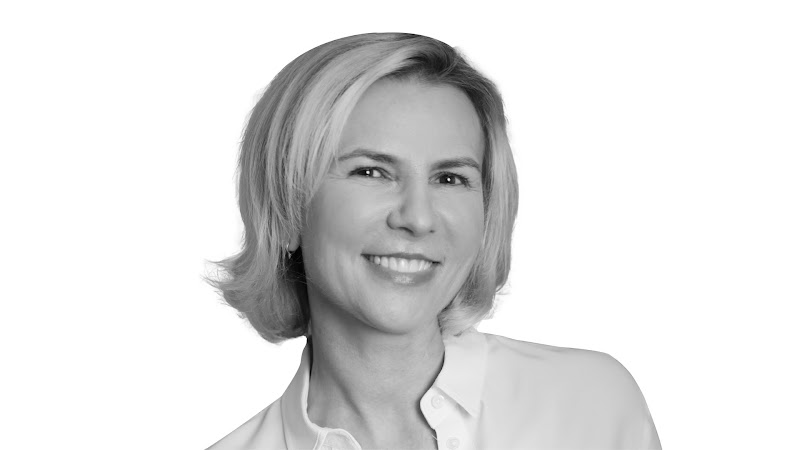
Nestlé’s global CMO, Aude Gandon, talks to Decca Aitkenhead about her transformation of the Swiss fast-moving consumer goods (FMCG) company’s marketing strategy in the changing digital landscape of AI, social media, and data acquisition, and the enduring importance of the magic of human creativity.
If the Cannes Lions Awards are the World Cup finals of marketing, the team Aude Gandon took charge of in 2020 was the equivalent of a small but strong nation, like Nestlé’s home country of Switzerland. “Marketing,” as she says, “has never really been seen as part of our DNA.”
Last year, she set a team goal of winning Cannes Lions Marketer of the Year in 2030. The staff was stunned. The 158-year-old Swiss company is world-famous for its Drumstick, KitKat, Nesquik, and Pelligrino brands, but its marketing teams have kept a low profile. “The ambition was bold, but it is what the company, with its incredible heritage brands, deserve,” says Gandon.
Since becoming the FMCG company’s first-ever global CMO nearly four years ago, the Frenchwoman has embarked on a “total transformation.” Within four months, she had drawn up a five-year roadmap of quantifiable targets, for everything from making 25% of all sales online to increasing digital marketing investment to 70% and collecting 400 million consumers’ consented first-party data by 2025.
With more than 2,000 brands in 188 countries, a clear central vision was key to get everybody excited. “Goals have to be big enough to motivate and simple enough that the message trickles down very quickly. So, there is a bit of calculation, and then there’s just a bit of gut instinct, a bit of ambition,” she explains.
Goals have to be big enough to motivate and simple enough that the message trickles down very quickly.
In a marketing career that has blended art and science, Gandon worked in advertising for 25 years, before joining Google in 2015. “I wanted to understand tech, and, I thought: I need to learn it from the inside.” She recalls headlines from that time about the death of the CMO. “It was all about the CDO then,” she explains. But when I ask if the job of a CMO today is primarily creative or technical, she doesn’t hesitate. “Creativity comes first. Absolutely, 100%.”
Tech, she says, is like plumbing. “It’s highly important. If the plumbing in your house doesn’t work, you can’t do anything. But it’s still the plumbing. The house is understanding pop culture or seeing shifts in consumer behaviors. Or making your brand create emotions. If you don’t have that part right, however great the tech part is, it is not going to drive the business at all.”
Marketing is now an entertainment business
Last May she launched a new program called Creative Pulse to reanchor the power of creativity in the company. She invited Nestlé brand marketing teams from all over the world to submit their best campaigns and be critiqued by a new creative council, assembled from internal and external marketing experts. The key message to her brands is simple: “You need to spend time on TikTok and YouTube, because we’ve got to be more entertaining. Today, we are in the entertainment business.”
In 2020, only 40% of Nestlé’s marketing budget was spent on digital. It is now at 68%, but content, she stresses, must fit with the aesthetic grammar of each platform. “I don’t want it to feel like, ‘Oh, here comes the ad.’ For me, there’s nothing worse. And it doesn’t work on social platforms; it just doesn’t. Ad agencies trying to mimic influencers will always look like an imitation. And when you’re trying to be someone else, people see it.” So her spend on online influencers is “growing extremely fast.”
Creativity comes first. Absolutely, 100%.
Influencers have to be very carefully selected to fit with each brand. “There has to be authenticity. Otherwise it looks like: ‘Oh, they’ve been paid.’” But having chosen them, Nestlé then surrenders all control. Gandon explains: “The influencers create their content. We don’t change the content; it’s their content. That’s why you use them.”
Does she have sleepless nights about something going wrong? She smiles. “Yes, we do. But, touch wood, up to now it’s been overall OK. And I think maybe that’s the beauty of being a big Swiss company. We don’t rush into, ‘Oh, there’s this new hashtag; let’s jump on that fad.’ No, we take more time.”
Focus on creativity
All of Nestlé’s other marketing is created by its partner agencies. “There was a point where people were saying, well, with digital we don’t really need creative agencies. I don’t believe this. I genuinely believe we will always need an advertising agency.”
She continues to partner with WPP and Publicis, agencies Nestlé has worked with for decades. She has no interest whatsoever in an in-house creative agency. “If you are a really good creative, you want to work in a big international agency not at a corporation.”
The agencies film all of Nestlé’s marketing assets in 41 content studios, located around the world. By centralizing content creation to studios they own, the company has halved its costs and can deliver big crafts and big campaigns on this multitude of new platforms at the same level of quality. “Just because you’re on YouTube, that doesn’t mean it needs to look ugly or not well thought through.”
Get into the habit of collecting first-party data
If YouTube can persuade me to feed my cat Purina food, how can I be persuaded to buy it from Purina’s website instead of Amazon? She smiles again. “It’s a challenging question.” Nestlé’s total online sales have reached 16%, and the company is on track toward its first-party data goal. The benefits of this focus on data quality, she says, are mutual. “You’ll get more personalized information on the product for your cat, and,” she says, “companies always overvalued the worth of third-party data.”
“They would feel, OK, we’ve been reaching X amount of people, great! But if 50% of those people have no interest in your product, it’s not interesting; I don’t care. And that, for me, is the guiding light of everything we do with data. When we wrote our road map, we also cleaned our first-party data, because we thought a lot of it was too stale, or it was not on the right level of data and privacy.
“We lost a lot, but that was fine, and we are now ruthless on how we do data acquisition. If the data doesn’t have consent, it goes in the bin.” Even in countries where third-party data still hasn’t been phased out by law, she no longer uses it. “Get into the good habit. It’s like brushing your teeth.”
Adapt to a new marketing landscape
For Gandon, the single biggest change in the marketing landscape today is AI, and she now spends at least 15% to 20% of her working week thinking or talking about it. Does it fill her with excitement or dread? “Both, in equal measure. I’m on the positive side. But I think governments need to legislate.” All the new Gen AI tools are going to give us incredible opportunities to be even more creative and should also help us to reduce travel for content production. Which is good news for the planet.”
Sustainability is now a huge part of the CMO’s brief. During the day I spent with Gandon at Nestlé’s HQ in Vevey, Switzerland, I watched her present to coffee teams from around the world an Australian ad campaign for FitChix eggs. The ad featured hens wearing step-counters to prove their free-range credentials — a good example of the marketing power of humor. The twin challenges of selling a sustainability message are, she says, how to neutralize consumers’ suspicions of greenwashing and — crucially — not be boring. Is humor the single most powerful marketing tool? “I think so, yes.”
AI can never replicate the elusive magic of human creativity.
Returning to AI, the one thing she is confident in is that “AI can never replicate the elusive magic of human creativity. I still think that the human touch will always need to be there,” she says.
As for her digital media spend, Gandon has no plans to exceed her 70% target on digital. “I absolutely believe in [retaining] one-third on traditional media.” Are big legacy media campaigns important for sales or brand status? “Both. Of course, in a digital world you have less of these stories. But I think we need to balance this.”
The road to global CMO and beyond
Gandon herself strikes an appealing balance between self-belief and self-effacement. How does she assert her authority? “I’ve always invested a lot of time in listening to people.” She suspects it’s no coincidence that the majority of CMOs are now women. “I think the feminine aspect helps. I think we listen more.”
The global CMO role at Nestlé was a daunting challenge, but the opportunity “to be part of a transformation” was irresistible. The position of CMO is increasingly replacing the CFO as a gateway to CEO. Nominated for the WFA Global Marketer of the Year 2023, Gandon fits the profile for that career path. Is that the ultimate goal?
“I’m not saying I wouldn’t like to be a CEO, but it’s not the ambition. There is a lot for me to do here at Nestlé. But if there was the right opportunity in the right company, why not?”


